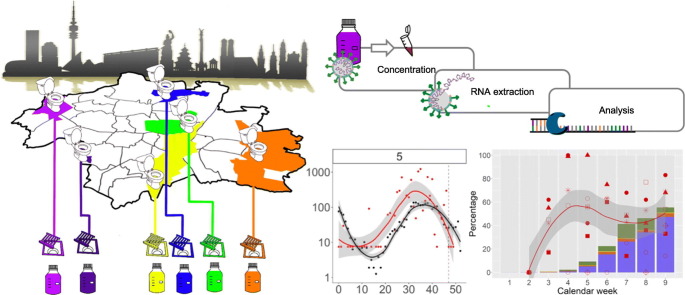- Record: found
- Abstract: found
- Article: not found
Spatially resolved qualified sewage spot sampling to track SARS-CoV-2 dynamics in Munich - One year of experience

Read this article at
Abstract
Wastewater-based epidemiology (WBE) is a tool now increasingly proposed to monitor the SARS-CoV-2 burden in populations without the need for individual mass testing. It is especially interesting in metropolitan areas where spread can be very fast, and proper sewage systems are available for sampling with short flow times and thus little decay of the virus. We started in March 2020 to set up a once-a-week qualified spot sampling protocol in six different locations in Munich carefully chosen to contain primarily wastewater of permanent residential areas, rather than industry or hospitals. We used RT-PCR and sequencing to track the spread of SARS-CoV-2 in the Munich population with temporo-spatial resolution.
The study became fully operational in mid-April 2020 and has been tracking SARS-CoV-2 RNA load weekly for one year. Sequencing of the isolated viral RNA was performed to obtain information about the presence and abundance of variants of concern in the Munich area over time.
We demonstrate that the evolution of SARS-CoV-2 RNA loads (between <7.5 and 3874/mL) in these different areas within Munich correlates well with official seven day incidence notification data (between 0.0 and 327 per 100,000) obtained from the authorities within the respective region. Wastewater viral loads predicted the dynamic of SARS-CoV-2 local incidence about 3 weeks in advance of data based on respiratory swab analyses. Aligning with multiple different point-mutations characteristic for certain variants of concern, we could demonstrate the gradual increase of variant of concern B.1.1.7 in the Munich population beginning in January 2021, weeks before it became apparent in sequencing results of swabs samples taken from patients living in Munich.
Overall, the study highlights the potential of WBE to monitor the SARS-CoV-2 pandemic, including the introduction of variants of concern in a local population.

